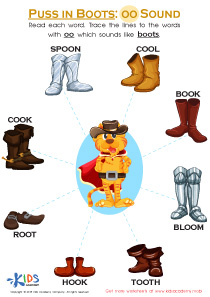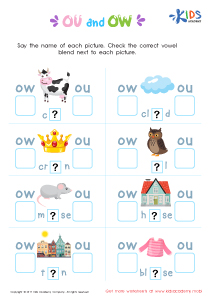Vocabulary expansion Normal Vowel Blends Worksheets for Ages 4-7
7 filtered results
-
From - To
Enhance your child's vocabulary with our engaging Normal Vowel Blends Worksheets designed for ages 4-7. These interactive worksheets focus on blending vowels in stimulating, educational activities tailored for early learners. By exploring various vowel combinations, kids will strengthen their reading and pronunciation skills while expanding their vocabulary. Featuring colorful illustrations and fun exercises, these worksheets make learning enjoyable and effective. They also integrate phonics principles, helping young students develop a solid foundation in language. Perfect for both classroom settings and at-home learning, our worksheets foster a love for words and boost confidence in literacy. Download now for hours of educational fun!
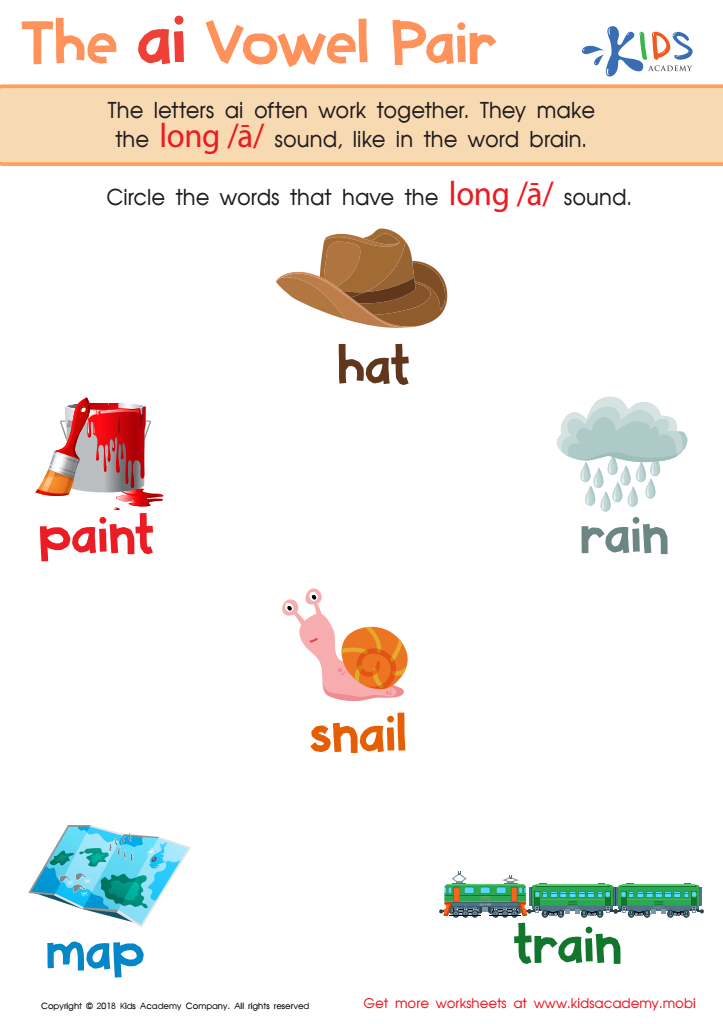

The AI Vowel Pair Worksheet
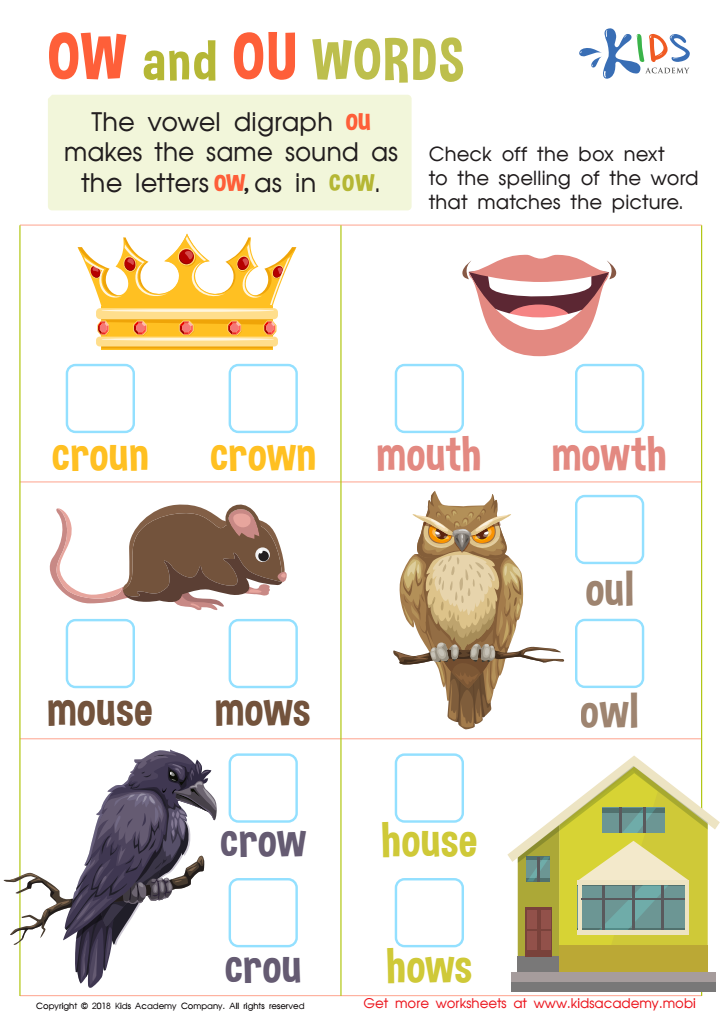

Reading: OW and OU Words Worksheet
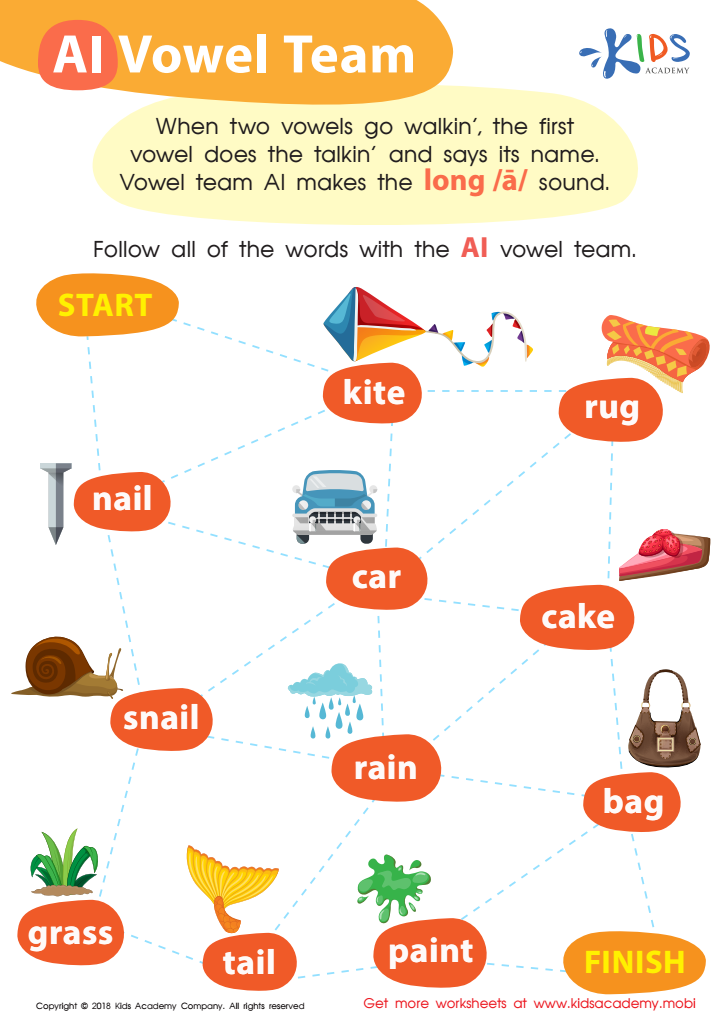

Reading: AI Vowel Team Worksheet
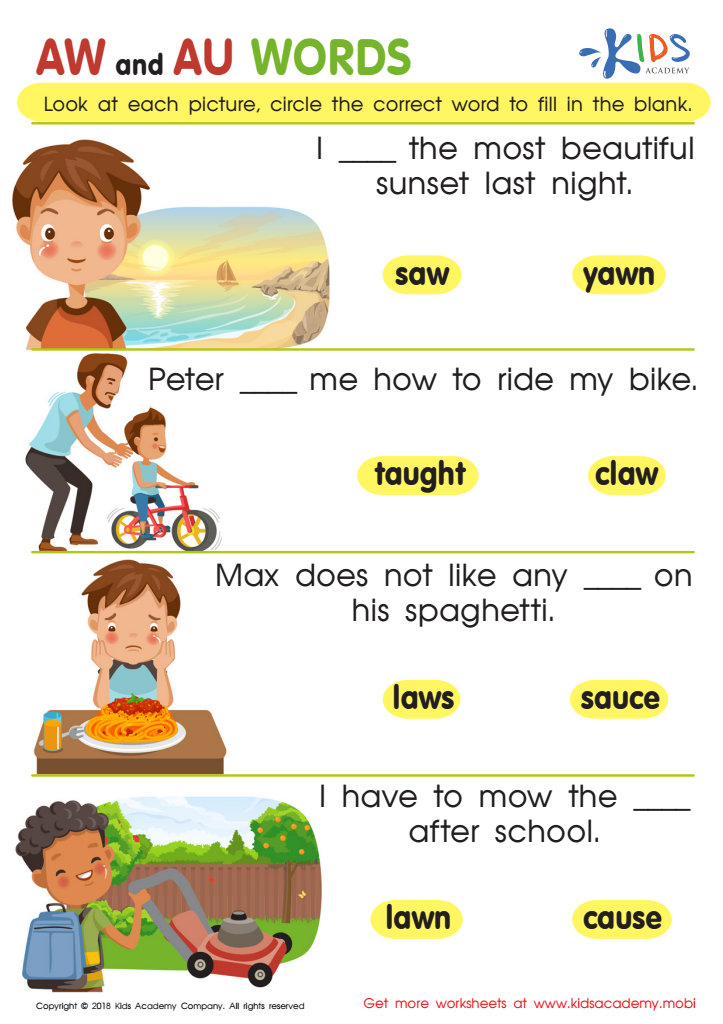

Reading: AW and AU Words Worksheet
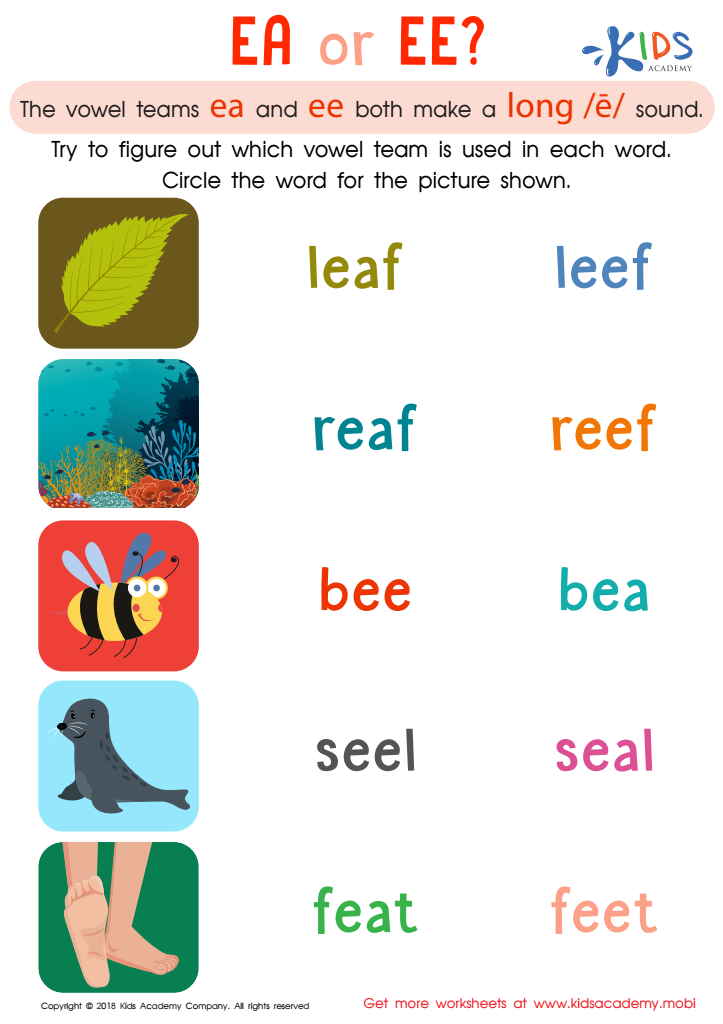

Reading: EA and EE Worksheet
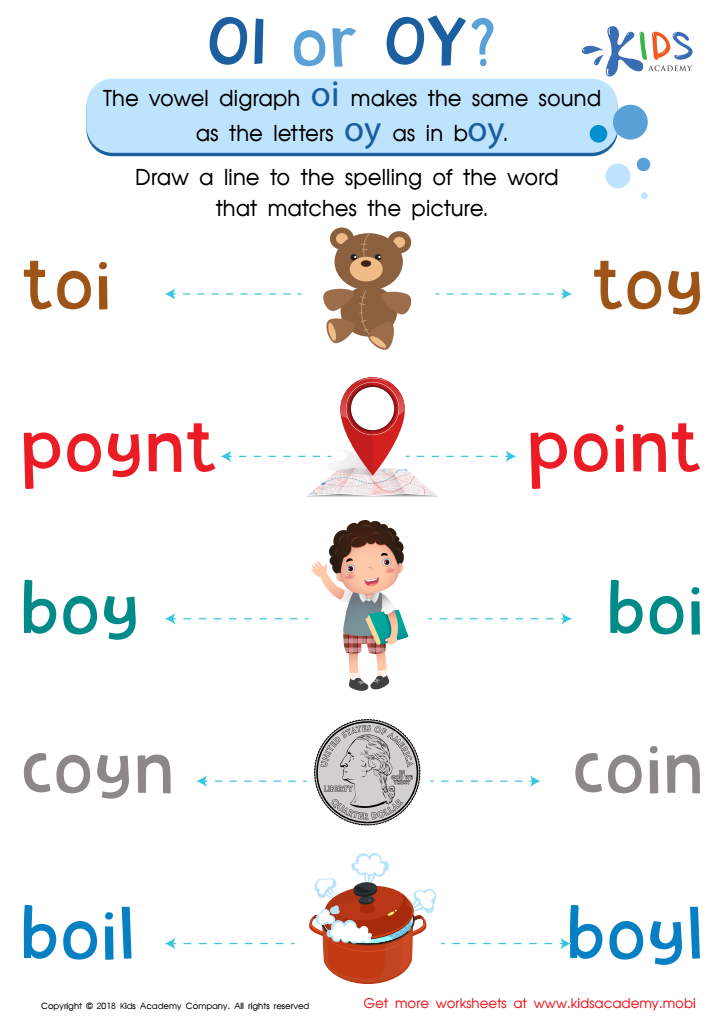

Reading: OI and OY Worksheet


Reading: EA as in Bread Worksheet
Vocabulary expansion during the early ages of 4-7 is crucial for children’s language development and cognitive growth. Normal vowel blends are an essential aspect of this process, as they lay the foundation for reading fluency and comprehension. At this stage, children are building their phonetic awareness, and understanding vowel blends helps them decode words more effectively, enriching their reading experience.
Parents and teachers who focus on vocabulary expansion through these blends can significantly enhance a child’s communication skills. This age group is particularly receptive to learning, and exposure to diverse vocabulary encourages curiosity and a love for language. Engaging in activities such as storytelling, rhymes, and games that incorporate vowel blends makes learning natural and fun.
Additionally, a strong vocabulary supports social interaction and helps children express themselves clearly. This can foster self-confidence and facilitate smoother interactions with peers and adults. By prioritizing vocabulary skills, parents and teachers contribute to a solid educational foundation, setting children up for success in later literacy tasks. Ultimately, caring about vocabulary expansion through normal vowel blends is an investment in a child’s future academic achievements and lifelong learning.
 Assign to My Students
Assign to My Students








